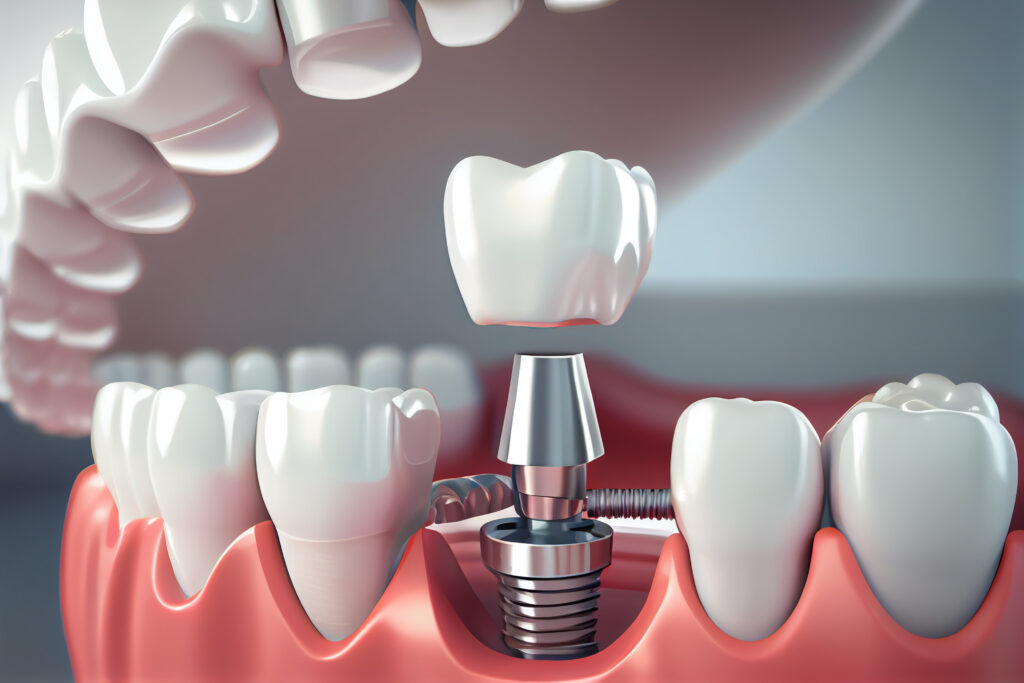Dental Teeth Implants Grandville MI - Dental Implants services
The journey towards dental implants begins with a thorough assessment of the jawbone's condition. When there could be insufficient bone density to support an implant, bone grafting turns continue reading this into a crucial process to recreate a steady foundation. Understanding how much bone grafting is needed for dental implants see this tremendously influences the treatment plan, timeline, and general success rate.
The amount of bone grafting required depends on multiple components, together with the extent of bone loss, the implant's dimension, and the particular location within the mouth. In cases of serious bone loss as a result of periodontal ailments, trauma, or prolonged tooth loss, extra intensive grafting could additionally be necessary. Conversely, if the bone loss is minimal, a smaller graft may suffice.
Implants Dental Near Me Wyoming MI - Dental Implants Surgical Technique Videos
The evaluation process typically entails imaging research similar to X-rays or 3D scans, permitting the dental skilled to visualize the bone structure (Dental Implant And Bridges Grand Haven MI). These photographs assist in figuring out the quality and amount of existing bone. If the bone is deemed insufficient, the dentist will then define the appropriate grafting procedures
Grafting may be sourced from varied areas. Autografts, which involve harvesting bone from the affected person's personal physique, are sometimes deemed the gold standard. These offer glorious integration with the existing bone but come with the drawback of additional surgery. Other options include allografts, which use donor bone, and synthetic materials designed to mimic natural bone. Each possibility has its personal implications on healing and success rates.
After figuring out the mandatory quantity of bone grafting, the dental skilled will create a tailor-made plan for the patient. This plan may include the timing of bone grafting in relation to the implant placement. In some circumstances, a graft could be performed simultaneously with the implant surgery. Alternatively, in more difficult situations, a separate healing interval is indicated.
Healing timelines differ based mostly on the person's health, the extent of grafting, and the type of graft used. Generally, the healing of a bone graft takes several months earlier than an implant could be positioned. During this time, bone regeneration occurs, leading to a stable base for the implant.
Dental Implant Dentures Grandville MI - Dental Implants for Multiple Missing Teeth
Patients typically surprise in regards to the risks related to bone grafting. While complications similar to infection or graft failure are possible, these occasions are comparatively uncommon. Adhering to post-operative care instructions and attending follow-up appointments reduce risks and promote therapeutic.
Once the bone has adequately healed, the dentist assesses the graft's success by evaluating the bone density and stability. If every little thing appears favorable, the subsequent steps toward inserting the dental implant can commence. The success of this next step largely hinges on the quality of the bone graft and its integration with the surrounding bone.
Cost concerns play an essential function in the decision-making process. The expense of bone grafting varies primarily based on materials used, the complexity of the case, and geographic location. It is essential for sufferers to discuss finances upfront to avoid unexpected payments later within the therapy.
Cheap Dental Implants Norton Shores MI - Dental Implants for Multiple Missing Teeth
Also, patients ought to have practical expectations regarding the timeline and outcomes. Many factors can influence how a lot bone grafting is needed and its overall effectiveness. A collaborative method involving the patient and the dental team not only ensures clarity but additionally enhances the probabilities of a successful consequence.

Maintaining good oral hygiene and regular dental visits following the procedure is significant. These practices can prevent complications and make sure that both the graft and the implant stay steady over time. The ongoing relationship with a dental professional is essential, especially within the months following the procedures.
In conclusion, understanding how much bone grafting is required for dental implants encompasses a multi-faceted method that considers bone quality, grafting varieties, healing time, and total affected person health. The steadiness between attaining the specified aesthetic and functional outcomes while minimizing risks and issues is at the heart of dental implant procedures. The journey may be extensive, however a well-planned approach maximizes the chances for a profitable, long-lasting end in restorative dental work.
- Determining the amount of bone grafting required for dental implants usually hinges on the preliminary bone density and volume of the affected person's jawbone.
- Each patient's case is unique; elements such as earlier extractions, periodontal disease, or trauma can influence the need for grafting.
- A 3D imaging scan is typically performed to evaluate the precise dimensions of the obtainable bone and inform the grafting technique.
- The type of dental implant placement—immediate or delayed—may dictate the amount of bone grafting essential for stability and integration.
- Different types of graft materials, such as autografts, allografts, or synthetic choices, can impact how a lot grafting material is needed.
- Assessing the patient's general health, age, and way of life habits can have an result on the therapeutic process, influencing graft quantity requirements.
- The depth and placement of the implant can necessitate varying quantities of graft material to safe optimal outcomes.
- Successful integration of the dental implant usually relies on enough bone density, resulting in a tailored grafting method for every particular person.
- Consultation with an oral surgeon will provide a clearer estimate of the bone grafting needed based mostly on complete evaluations and imaging outcomes.
- Post-grafting therapeutic time varies; thus, a careful analysis is essential to determine the ultimate quantity of grafting required for successful implantation.undefinedHow much bone grafting is required for dental implants?
Dental Implants Whole Mouth Jenison MI - Get Dental Implants
What is bone grafting and why is it necessary for dental implants?undefinedBone grafting is a surgical process that provides bone or bone-like materials to the jawbone. It is critical for dental implants when the present bone is inadequate to support the implant, guaranteeing stability and long-term success.
How do I know if I want a bone graft for dental implants?undefinedYour dentist or oral surgeon will consider your jawbone through x-rays or 3D imaging to find out its density and quantity. If they discover that you just lack sufficient bone, they'll advocate a bone graft before proceeding with the dental implant.
Full Mouth Dental Implants Walker MI - Dental Implants Overview
What factors influence the quantity of bone grafting needed?undefinedFactors include the scale and location of the implant website, the health and density of present bone, and particular person therapeutic capability (Implants Dental Procedure Muskegon Heights MI). These elements help the dentist decide the appropriate quantity of graft material needed
Are there different varieties of bone grafts used for dental implants?undefinedYes, there are a quantity of varieties, together with autografts (from your personal body), allografts (from a donor), xenografts (from animals), and synthetic graft materials. Each type has distinctive benefits and may be selected primarily based on particular person affected person wants.
Dental Implant And Bridges Grand Haven MI - Dental Implants for Multiple Missing Teeth
How long does the bone grafting procedure take?undefinedThe period varies primarily based on the complexity of the grafting process and the extent of the world handled. Generally, a bone grafting procedure can take anyplace from half-hour to a couple hours, depending on the precise circumstances.
What is the recovery time after a bone graft for implants?undefinedRecovery times can differ, but sometimes, preliminary therapeutic would possibly take a few weeks, while complete integration of the graft with the bone can take several months. Your dentist will provide a customized timeline based mostly in your state of affairs.

Will I experience pain after the bone grafting procedure?undefinedSome discomfort is common after a bone graft, however it's usually manageable with prescribed pain treatment. Most sufferers report that pain diminishes considerably inside a number of days.
Dental Teeth Implants Grandville MI - What Are Dental Implants?
How does bone grafting affect the overall dental implant timeline?undefinedBone grafting may extend the general timeline for receiving dental implants, because it requires a therapeutic period earlier than implants could be placed. This can add several months to the method however is important for a successful implant placement.

Are there risks associated with bone grafting for dental implants?undefinedLike any surgical procedure, bone grafting carries some risks, such as infection, graft failure, or complications associated to anesthesia. However, when carried out by an skilled skilled, these risks are usually low.
Can I even have dental implants placed instantly after a bone graft?undefinedIn many circumstances, dental implants can't be placed immediately after a bone graft because of the need for the graft to combine into the prevailing bone. However, some methods, like immediate loading, may enable for this beneath specific conditions. Your provider will advise you on the best suited choice based in your circumstances.